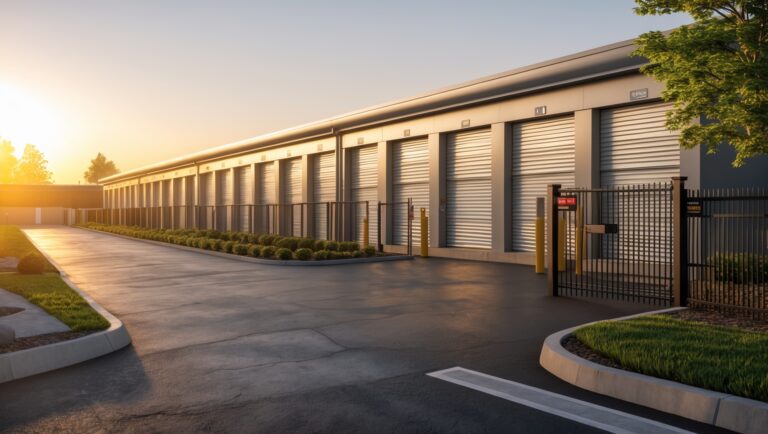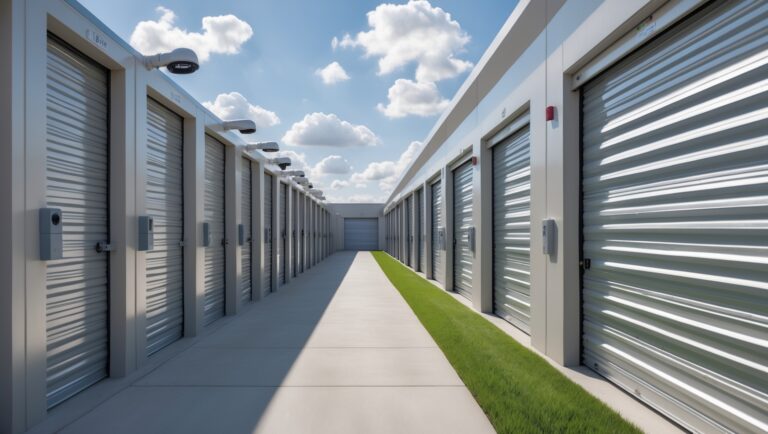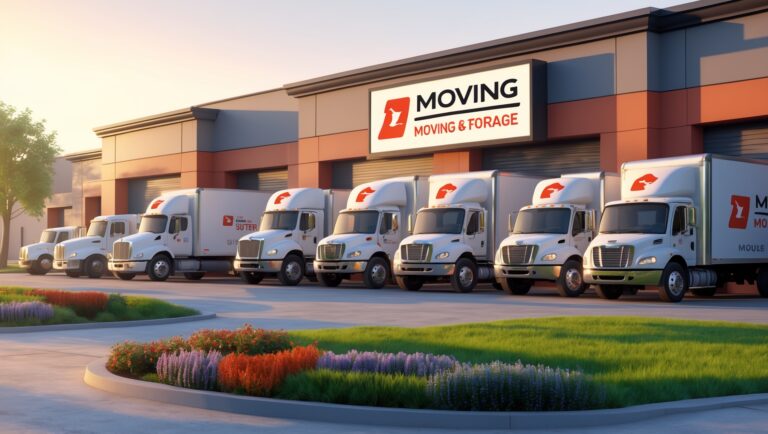Debunking Common Myths About Self-Storage: What You Really Need to Know
Introduction: Why Self-Storage Myths Matter
Self-storage units have become a staple for homeowners, renters, and businesses alike. Whether you’re downsizing, decluttering, relocating, or expanding your business, self-storage offers a flexible solution for safeguarding your possessions. However, along with the convenience comes a host of myths and misconceptions that can cloud judgment, influence decisions, and even cost you time and money. From beliefs about security and pricing to misunderstandings about what you can store and for how long, these myths persist—often fueled by outdated information, word-of-mouth tales, or misleading advertisements.
Making storage decisions based on myths can lead to overcrowded units, damaged belongings, unnecessary expenses, and missed opportunities for better solutions. In this comprehensive guide, we’ll tackle the most common self-storage myths head-on, providing you with the facts you need to make informed, cost-effective choices. Whether you’re a first-time renter or a seasoned storage user, understanding the reality behind these misconceptions will empower you to protect your valuables, optimize your space, and avoid the pitfalls that trip up so many. Let’s set the record straight.
Myth #1: Self-Storage Units Are Not Secure
Understanding Modern Storage Security
Security is often the top concern for anyone considering self-storage. The myth that storage facilities are easy targets for theft is rooted in outdated stereotypes. Today’s reputable self-storage providers invest heavily in multi-layered security features, including:
- 24/7 Video Surveillance: High-definition cameras cover entry points, hallways, and exteriors.
- Electronic Gate Access: Unique codes restrict entry to authorized users only.
- On-Site Staff: Managers and security personnel often monitor activity during business hours.
- Individual Unit Alarms: Many facilities install alarms that trigger if an unauthorized person enters a specific unit.
- Good Lighting: Bright, motion-activated lighting deters suspicious activity.
Practical Security Tips
- Choose a disc lock or cylinder lock for your unit; they’re more resistant to bolt cutters.
- Store valuable items out of plain sight, ideally in the back of the unit.
- Keep a detailed inventory and consider insurance for high-value belongings.
Not all facilities are equal—do your due diligence by visiting in person, reading reviews, and asking about security policies.
Myth #2: Self-Storage Is Always Expensive
Breaking Down Self-Storage Costs
Many believe that renting a storage unit is a luxury reserved for those with extra cash. In reality, self-storage offers a wide range of price points and flexible options. Factors influencing cost include:
- Unit Size: Smaller units (5×5 or 5×10 feet) can be surprisingly affordable.
- Location: Facilities in urban centers generally cost more than those in suburban or rural areas.
- Climate Control: Premium features like climate control add to the monthly rate but can be worthwhile for sensitive items.
- Access Hours: 24/7 access units may command higher fees.
Tips to Save Money
- Declutter before renting to avoid paying for unnecessary space.
- Ask about move-in specials, student/military discounts, or long-term rental deals.
- Share a larger unit with a friend or family member if possible.
With proper planning, self-storage can be a cost-effective extension of your home or business.
Myth #3: Anything Can Be Stored in a Self-Storage Unit
Understanding Prohibited Items
It’s a common misconception that you can store anything in a self-storage unit. However, facilities strictly prohibit certain items for safety, legal, and environmental reasons. Generally banned items include:
- Hazardous Materials: Flammable liquids, explosives, propane tanks, and chemicals.
- Perishable Goods: Food or plants that could attract pests.
- Living Things: Animals or people are strictly forbidden.
- Stolen or Illegal Items: Self-storage is not a safe haven for contraband.
- Unregistered Vehicles: Most facilities require documentation for any stored vehicle.
Best Practices for Safe Storage
- Consult your facility’s contract to understand their prohibited items list.
- When in doubt, ask the manager before moving anything in.
- Use airtight containers for items susceptible to dust or moisture.
Myth #4: Climate Control Is Unnecessary in Most Climates
The Importance of Climate-Controlled Storage
Many renters assume that unless they live in an extreme climate, climate-controlled storage isn’t worth the extra cost. In reality, temperature and humidity fluctuations can cause significant damage to sensitive items, including:
- Wooden Furniture: Warps, cracks, or swells with moisture changes.
- Electronics: Prone to corrosion and malfunction if exposed to humidity.
- Paper Goods: Photos, documents, and books can become brittle or moldy.
- Musical Instruments: Sensitive to temperature swings and humidity.
Even moderate climates experience seasonal swings. If you plan to store possessions for more than a month, especially valuables or collectibles, consider climate control for peace of mind.
Myth #5: Long-Term Storage Means You Can Set It and Forget It
Why Regular Check-Ins Matter
It’s tempting to pack up your unit and not think about it again until you need your items. However, long-term storage requires periodic attention:
- Inspect for Leaks or Pest Issues: Even top-tier facilities are not immune to unforeseen problems.
- Rotate or Repack Items: Cardboard boxes can degrade; plastic bins offer more protection.
- Update Your Inventory: Keep track of what’s inside, especially if you add or remove items over time.
Recommended Maintenance Schedule
- Visit your unit at least every 2-3 months.
- Check for signs of dampness, pests, or damage after heavy storms or weather events.
- Replace silica gel packs or moisture absorbers as needed.
Myth #6: All Storage Facilities Offer the Same Features
Key Differences Among Facilities
Self-storage is not a one-size-fits-all industry. Facilities can vary widely in terms of features and services:
- Access Hours: Some offer 24/7 access, others limit entry to business hours.
- Unit Types: Drive-up, indoor, or upper-floor units each have pros and cons.
- Security Measures: As discussed, these can range from basic to state-of-the-art.
- Onsite Amenities: Dollies, loading docks, package acceptance, and vehicle storage.
- Customer Support: Some offer online account management and bill pay, others may not.
Always compare facilities based on your specific needs, not just price or location.
Myth #7: Renting a Storage Unit Is Complicated
Simplifying the Rental Process
People often assume that renting a storage unit involves paperwork headaches and complex processes. In reality, many facilities now offer:
- Online Reservations: Reserve a unit in minutes from your phone or computer.
- Contactless Move-In: Access your unit without ever stepping foot in the office.
- Month-to-Month Leases: No long-term commitment required.
- Transparent Pricing: Clear contracts that outline all fees and policies.
Bring a government-issued photo ID and the first month’s rent, and you’re often good to go.
Myth #8: Insurance Is a Waste of Money
Why Storage Insurance Is Smart
Some renters skip insurance, believing their items are either safe enough or covered under their existing policies. The truth is:
- Most home or renters’ insurance offers limited or no coverage for items stored offsite.
- Storage facilities are typically not responsible for damage due to fire, flood, or theft.
- Storage-specific insurance is affordable and can save you thousands in case of disaster.
Always review your policy and consider facility-offered insurance for full protection.
Myth #9: Storage Units Always Stay Clean and Pest-Free
Maintaining a Clean Storage Environment
Even the best facilities are susceptible to pests, dust, and mold. Preventative measures are key:
- Store items in plastic bins with tight-fitting lids.
- Avoid storing food, even non-perishables.
- Use cedar blocks or pest deterrents safely inside your unit.
- Elevate items off the floor with pallets or shelving.
Choosing a facility with regular pest control and cleaning programs adds another layer of protection.
Myth #10: You’re Locked Into a Long-Term Contract
Flexible Rental Terms
Most modern self-storage operations understand customers’ needs for flexibility. Standard features include:
- Month-to-Month Leases: Move in and out as your situation changes.
- No Penalty for Early Move-Out: Give proper notice and avoid extra fees.
- Simple Upgrades or Downgrades: Easily switch unit sizes as your needs evolve.
Always clarify lease terms before signing, but rest assured that rigid, year-long contracts are largely a thing of the past.
Conclusion: Make Informed Storage Choices
Self-storage can be a powerful tool for simplifying your life, protecting your valuables, and supporting your business or lifestyle transitions. But falling for common myths can cost you—sometimes literally. By debunking these widespread misconceptions, you can approach self-storage with confidence, knowing what to expect and how to maximize your investment. Prioritize security, understand your insurance options, and choose facilities based on features that match your specific needs, not just price or convenience.
Before you sign a contract or move your belongings, take the time to research your options, ask questions, and read reviews. Visit facilities in person when possible, and always read the fine print. Don’t hesitate to consult with facility managers—they’re often happy to share advice tailored to your situation.
Remember, self-storage doesn’t have to be intimidating or expensive. With the right knowledge, you can avoid rookie mistakes, keep your items safe and accessible, and enjoy the peace of mind that comes from making informed decisions. Store smart, stay organized, and let self-storage work for you—not against you.





